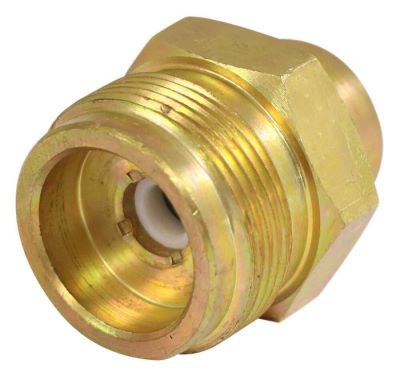Understanding the type of threads used on propane fittings is crucial for ensuring the safety and efficiency of your propane system. Incorrect thread identification can lead to leaks, pressure loss, and potential hazards.
Understanding Propane Fittings: An Overview
Propane fittings are essential components that connect propane tanks, hoses, and appliances in various applications, including residential, commercial, and industrial settings. The threads on these fittings play a vital role in securing connections, preventing leaks, and maintaining the integrity of the propane system.
What Does “Tapered” Mean? A Closer Look at Tapered Threads
Tapered threads are characterized by their gradual decrease in diameter from the root to the crest. This taper creates a tight seal when the fitting is tightened, ensuring a secure connection and preventing leaks.
Common types of fittings that use tapered threads include:
➡️ NPT (National Pipe Tapered): A widely used standard for pipe fittings in the United States and Canada.
➡️ BSPT (British Standard Pipe Tapered): A common standard in many parts of the world.
Flat Threads Explained: When and Why They Are Used
Flat threads, also known as parallel threads, have a constant diameter throughout their length. While they don’t provide the same level of sealing as tapered threads, they are often used for structural connections or when a specific thread pitch is required.
Examples of flat-threaded fittings in propane systems include:
➡️ Flared fittings: Used in hydraulic and pneumatic systems, including some propane applications.
Tapered vs. Flat Threads: Key Differences and How to Identify Them
1. Appearance: Tapered threads have a visible slope from the root to the crest, while flat threads have a uniform diameter.
2. Seal: Tapered threads create a tight seal due to their taper, while flat threads often require additional sealing methods.
3. Usage: Tapered threads are generally used for high-pressure applications and sealing connections, while flat threads are more suitable for structural connections and specific thread pitch requirements.
Safety Concerns: Choosing the Right Thread Type for Propane Fittings
Using the wrong type of thread can lead to serious consequences, including:
➡️ Leaks: Gas leaks can pose a fire or explosion hazard.
➡️ Pressure loss: Incorrect thread types can cause pressure loss, affecting the performance of propane appliances.
Always consult the manufacturer’s instructions and follow best practices for installing and maintaining propane fittings.
Tools and Techniques: Proper Installation of Propane Fitting Threads
Here are the essential tools and techniques to proper installation:
➡️ Essential tools: Wrenches, pipe threaders, thread sealant or tape.
➡️ Installation steps:
1. Clean the threads to remove debris.
2. Apply thread sealant or tape, if necessary.
3. Tighten the fitting using the appropriate wrench.
4. Check for leaks after installation.
Conclusion: Ensuring a Safe and Efficient Propane Setup with the Right Threads
Understanding the differences between tapered and flat threads is essential for maintaining a safe and efficient propane system. By choosing the correct thread type and following proper installation techniques, you can prevent leaks, ensure optimal performance, and minimize the risk of accidents.
Post time: Sep-25-2024


